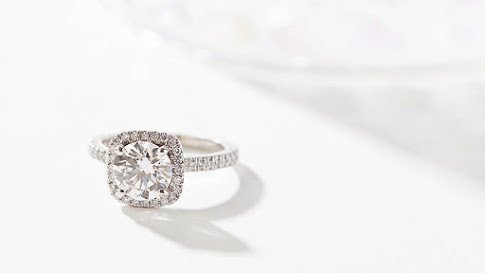CVD Diamonds: Everything You Need to Know
CVD, or Chemical Vapor Deposition, diamonds. To the uninitiated, the name is often met with blank stares and raised eyebrows; most people have no idea (or an erroneous idea) of what CVD diamonds even are. That’s because CVD isn’t an acronym that those outside of the diamond industry generally encounters. And that’s unfortunate, because, for anyone interested in diamonds, their environmental and social impact, and their cost, CVD diamonds are definitely worth looking into.
That’s why we’ve compiled this handy CVD-Diamond FAQ. Here, you’ll learn all about what makes these stones so special, and how to find the right CVD-diamond option to fit your needs.
Exclusive content : best place to buy solitaire diamonds
But first, let’s start with the basics.
What Are CVD Diamonds?
Simply put, some diamonds come from below ground and some come from above ground CVD diamonds are man-made diamonds. Unlike natural diamonds which take billions of years to form deep beneath the Earth’s surface, CVD diamonds are grown in labs. Specifically, CVD diamonds rely on a special process called Chemical Vapor Deposition (or CVD).
Are CVD Diamonds Real Diamonds?
They may be called “synthetic,” but don’t let the term fool you. Everything, from their internal atomic structure to the way they glitter on your finger, CVD diamonds are identical to the mined diamonds that have to be excavated from the ground. CVD diamonds look exactly like so-called “natural” diamonds. In fact, even a trained jeweler cannot identify the difference. And this isn’t just the opinion of diamond manufacturers, either; in 2018, the FTC ruled that, for all intents and purposes, synthetic diamonds and natural diamonds are the same thing: 100% a diamond!
Are CVD Diamonds the same as Cubic Zirconias?
No, CVD diamonds are not the same as cubic zirconias. CVD diamonds are atomically identical to mined diamonds and are composed of pure crystalline carbon. Cubic zirconias, on the other hand, are just imitation stones, designed to superficially resemble diamonds. Instead of carbon, cubic zirconias are made from synthetic zirconium dioxide. Cubic zirconias may look like diamonds to the untrained eye but they don’t have nearly the sparkle of a diamond. CVD diamonds are diamonds.
How Are CVD Diamonds Made?
Growing CVD diamonds relies on a unique and innovative process. In chemical vapor deposition, a thin ‘seed’ diamond is placed inside of a sealed chamber and subjected to high temperatures (generally around 800°C). Then, a carbon-rich gas mixture (usually of hydrogen and methane) is introduced to the chamber. The gases are ionized to break down their molecular bonds, allowing the pure carbon to attach itself to the diamond seed. As the carbon builds up, it forms atomic bonds with the seed diamond, resulting in the growth of a new, larger diamond — completely identical to the diamonds found in nature.
What Is the History of CVD Diamonds?
The first lab-grown diamond was created by General Electric back in 1955. DeBeers bought the technology and it disappeared for many years. And while the GE/DeBeers diamond was grown using the HPHT approach, it set the stage for later technological advances that would eventually lead to the creation of CVD diamonds. By the 1980s, CVD diamonds had become a reality.
Are CVD Diamonds Flawless?
You might expect a lab-grown CVD diamond to naturally turn out perfect. After all, it’s created in controlled conditions, right? But while the average CVD diamond will likely be of higher quality than the average mined diamond, CVDs still exhibit a range quality. This is because lab-conditions are essentially the same processes that produce diamonds in nature. And like natural diamonds, there’s a certain amount of randomness that tends to crop up.
As such, once CVD diamonds have finished growing, they are subjected to the same certification process used in grading mined diamonds. The diamonds’ color, cut, clarity, and carat (the 4 Cs) are all measured and graded by qualified diamond certification labs, and each diamond is given an overall grade.
What Are Some Other Benefits of CVD Diamonds?
The cost of creating a CVD diamond is much less than the cost of mining and transporting a natural diamond — and that’s to say nothing of the additional human and environmental costs associated with diamond mining.
The cost of mining diamonds from the ground goes well beyond dollars. The ecological and ethical issues associated with diamond mining create a lasting negative impact throughout the world. Often called “conflict diamonds” (or even “blood diamonds”), mined diamonds may be illegally traded to fund conflict in war-torn areas. Some diamond mines operate under terrible working conditions, which can lead to worker injuries or even human-rights violations.
Additionally, there are environmental issues to consider; for every carat of natural diamond extracted from the ground, nearly 100 square feet of land is disturbed and almost 6000 lbs of mineral waste are created.
CVD Diamonds don’t come from mines. They aren’t used to fund conflict. And they create almost no mineral waste. As such, they offer some fairly significant benefits over natural diamonds (even if they are benefits you can’t see under a microscope).
Are CVD Diamonds Right For Me?
Should you choose a CVD diamond? That’s a question that only you can answer. But we can tell you that given the environmental and ethical benefits of choosing a CVD diamond, not to mention the potential savings, more and more diamond enthusiasts are deciding to go with lab-grown options. And if you’d like a bit more guidance, we’re always ready to answer your questions.




Comments
Post a Comment